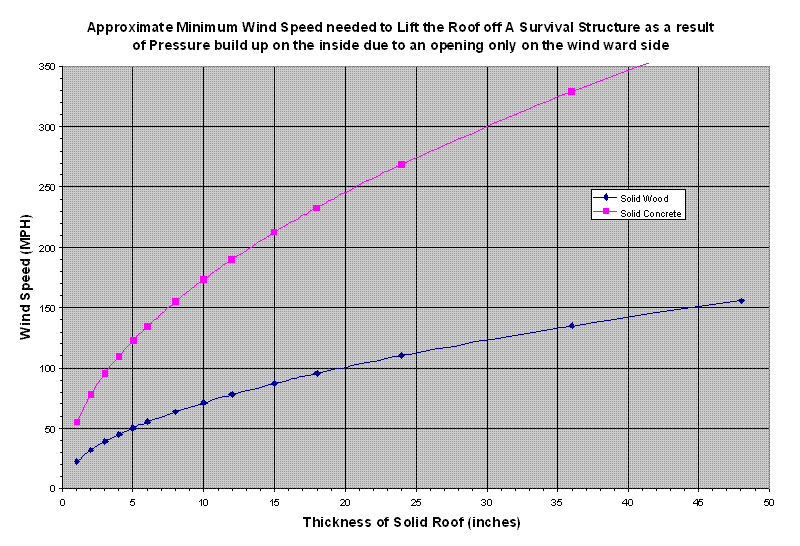
| |
 |
![]()
Accumulating wind pressure inside the structure: You might have seen TV news pictures of tornados or hurricanes where the house suddenly blows
apart from the inside out. These are examples of this pressure build up.
Lets look into the amount of pressure that develops inside a structure with wind blowing from one side. Assume the wind leaks into the up-wind
side by way of cracks around the door, a hole in the wall due to tree trunk punctured hole, a broken window(s) or a small vent hole left open as
examples. Assume that the other sides of the structure do not allow the pressure to leak off as fast as it builds up.
Lets ask how much wind speed does it take to lift off a roof only if not securely attached to its walls or foundation due to only this inside pressure
gradient build up.
Concrete weighs about 143 lb/cu ft. If one built a box or rectangle out of reinforced concrete then, how much would it take to lift the top slab off if
it were 12" thick and not securely attached to the walls? Looking this pressure of 143 lb/sq ft up on our chart for wind speed we get anything over
190 Miles/hr should apply an upward force grater than it's weight. For a 6" slab that weighs 71.5 lb/sq ft a wind of greater than 130 Miles/hr (209
KM/hr) would be needed.

Now if the walls are securely attached and expected to break away at the slab or floor, then in order to use the above chart one would estimate the
average resulting thickness as if all of the wall weight or area were distributed over the ceiling. My thinking is an average wood house roof thickness
would range somewhere in-between 2 to 6 inches with about 4 inches as an average. This gives approximately 45 MPH as the theoretical
separation of unsecured walls from foundation.
Now from past experience we know average houses can stand more wind speed than this. A more likely answer would be around 90 MPH. There
are other factors to be considered. As the flow of wind goes over the roof does it push down on half the roof and tend to lift the other half. If so the
above chart results for wind speed need to multiplied by a factor of approximately 2. Some shapes create a vacuum like the surface of a wing some
shapes would help hold the roof on. Take your best guess based on shape, size, location and surroundings.
Offered by Mike.